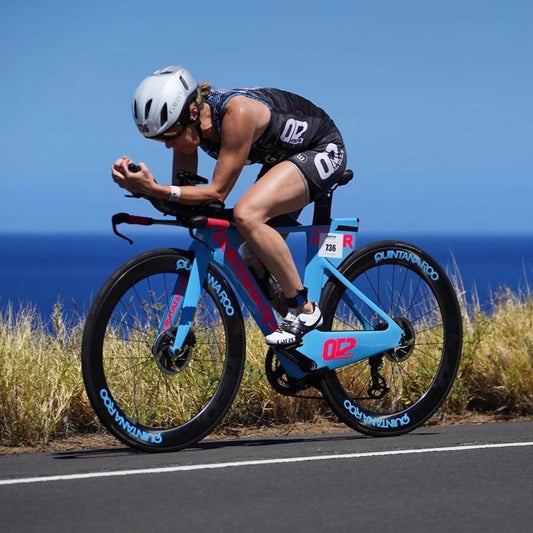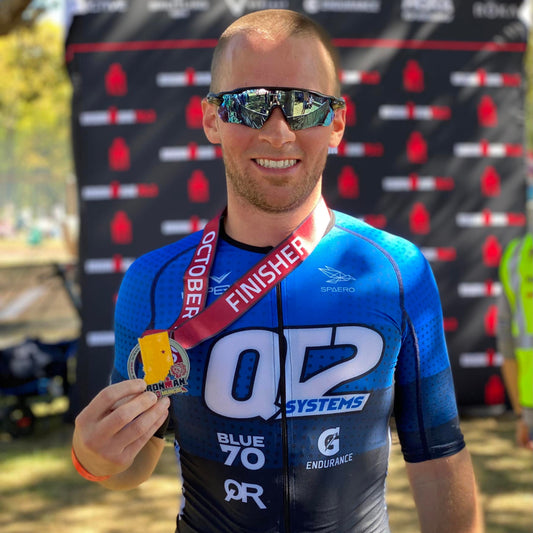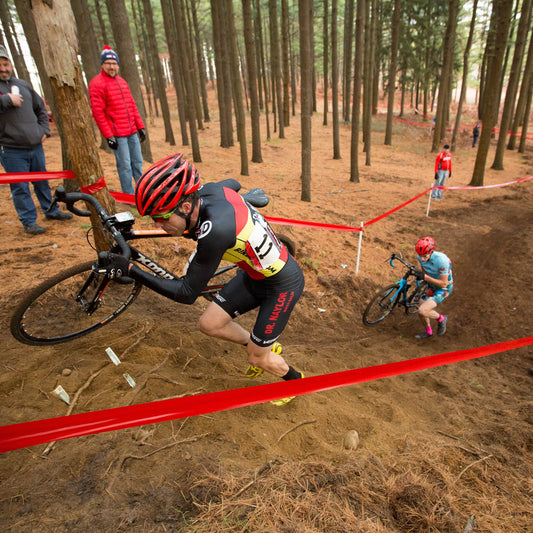This article was written by Steve Magness, and posted on The Growth Education website, HERE.
This curve is helpful for a variety or pursuits. It outlines the relationship between stress (or physiological arousal) and performance. How do you get in the best place to perform? You find the goldilocks of physiological arousal: too little and you aren’t excited or pumped enough; too much and that stress turns into anxiety and performance plummets.
This graph is used everywhere. In athletics, music, art, and the traditional workplace. It’s so entrenched that it is considered a law, the Yerkes-Dodson Law, to be exact.
It’s simple and intuitive. That simplicity helps it spread, but the complexity, nuance, and downright errors behind this curve are much more interesting. And if we understand the nuance, it becomes more helpful.
That’s what we’re here to do today: to unpack the inner workings of the relationship between stress, anxiety, and performance. This go around, we’ll look at what shifts the curve. In a future article, we’ll go into some tools to do so.
This will be a longer newsletter, but the information is gold if you are interested in performance in, well, just about anything.
Let’s start with how this law got formed thanks to a bunch of blind mice.
An Origin Story
It was 1908 and two psychologists, Robert Yerkes and John Dodson, did what scientists of the day did best. They took some mice and put them through a series of ridiculous and painful tasks. In this case, the mice had two boxes in front of them: a white box where they’d be shocked if they entered it, and a black box without any shock. They dropped the mice in a container holding both boxes and saw how quickly they learned to go to the box that avoided the shock.
The original Yerkes-Dodson research wasn’t about arousal and performance. It was about the intensity of being shocked and learning. In the original study, if the shock was too low or too high it took those poor mice a while to learn. The Goldilocks mid-level shock led them to learn quickest.
And thus, we had our first Yerkes-Dodson curve. The Goldilocks zone of performance.
But that wasn’t all the scientists found. They ran two more experiments, making finding the box easier or more difficult (by varying the light they let in, effectively blinding the mice in some conditions). It turned out that for simple tests, there was no U-shaped relationship, it was linear.

There are two important takeaways here:
- The original curve wasn’t arousal and performance.
- Task difficulty played an important role.
Over the next 50 years, something pretty astonishing occurred. At first, the research was largely ignored, with a handful of replications in other rodents, chickens, and kittens, that I can only explain as torturing animals to varying degrees and seeing if it impacts learning. (Hint: it did; fortunately, our ethics on running these kind of experiments have evolved a lot since back then).
However, in the 1950s and 1960s, researchers took this inverted-U concept and shifted it from torture and learning to arousal and performance. And only then did it quickly became a ‘law.’
That’s a nice history lesson. But does the curve hold up?
The Defensive Cascade
When it comes to physiological arousal, we smush together a wide range of processes into one overarching concept called “arousal.” The reality is more complex.
We have a number of levers we can pull. Some which turn the dial up, others down. Some move us towards the stress, others push us away from it. Some are short-term increasers, others keep us stressed for hours on end.
It’s why the “fight or flight” system we all hear about only covers a small part of the spectrum. Instead, we have a number of different responses.
- Freeze: Hyper alert immobility, forcing us to pause and assess the situation.
- Flight: Escape response. Panic with movement
- Fight, defend: Aggression, protect self (physical and psychological).
- Submit: Yield, withdraw, shut down, disassociate.
- Tend-and-Befriend: Connect with others.
We can slice and dice these in a number of ways, even including a myriad of other labels (faint, flagging, etc.). But for our purposes here, what matters is we have a number of levers that all push us towards emphasizing different information and taking different actions.
This response starts with our nervous system, and which route we go down and includes what mixture of hormones we send coursing through our body: cortisol, adrenaline, dopamine, oxytocin, testosterone, and so on. Each has a slightly different effect, shifting our perception and the information we take in and pushing us toward different actions.
With each twist and turn of the mixture, we are changing what we pay attention to (tunnel vision or zoomed out), our bias toward movement (take action or submit), what feedback we pay attention to (internal vs. external, emotions vs. thoughts, etc.) and much more. As we’ll learn, we can turn the dial on our perceptual system, influencing what actions we are likely to take.
What lever we pull depends on a number of factors that ultimately impact the arousal and performance curve relationship. They include:
- Task demands
- Risk/reward
- Emotional context
- Environmental triggers and cues
- Support or security
- Sense of control
- And much more
With each pull of the lever (or shift of our arousal curve) we prioritize something different. The way to think of it is that during a stressful situation we can’t have it all. We can’t both have all the information available and decide quickly. Stress forces us to balance our resources. This alters our perception and cognitive abilities:
Information:
- Quality of information vs. rapidity of action
- Broad attention vs. tunnel vision
Behavioral Bias:
- Approach vs. avoid
- Explore vs. exploit
Memory:
- Quality versus salience
Sometimes we need to act instead of think, other times, the opposite: take in more information instead of getting locked-in on the threat before us. As we climb and descend the stress and arousal curve, and as we shift which lever we pull, what we are biased towards changes as well.
For example, as we move toward too much stress, especially when it’s cortisol dominated, we move toward avoidance.
Studies have mapped dopamine’s role in this process. Again, this is complicated, so we’ll simplify. As dopamine increases, the type and way in which our neurotransmitters and hormones interact changes, and generally follows an inverted-U pattern. As dopamine rises, we move towards an optimum state of “alert-relaxed” that allows for creativity and flexible attention. Increase dopamine a little more, and we enter alert-pressured, a state that has more focused attention and precise representation. But as we crest optimum, we enter a state of impaired working memory and top-down control, and eventually a state of dissociation. While it’s easy to get lost in the neurochemical side, the point is that as we shift the chemical concentration, we have downstream effects on perception, memory, and our bias towards action.
Okay, we’ve got the science and backstory out of the way. Let’s look at what actually changes the curve.
Task Type And Difficulty
For decades, the Yerkes and Dodson Law forgot one of the most important points of the original research: task difficulty matters.
It turns out this is in fact true. For simple tasks, we can handle higher levels of arousal, and in some cases, higher levels might actually help.
The reason for this is pretty straightforward. Too much stress impairs higher-order thinking. Stress causes our pre-frontal cortex (PFC) starts to shut-down. It goes offline, and our amygdala (our threat detecting software) takes over. For simple tasks, our higher-order thinking can go offline, and we’ll be okay. For complex tasks, not so much. As researchers found, “tasks that required PFC operation were impaired by stress, whereas engrained habits that rely on basal ganglia circuits were spared or enhanced.”
Strength coach Dan John taught me to ask athletes where they needed to be, on a scale of 1-10, for the event they were competing at. A shot put might require a 7, a single explosive lift an 8, while playing golf might be a 4. This is mostly due to the demands of the task.

Another implication is that more experienced performers shift their curve to look a little bit more like the simple task curve. Not fully, but what we know is that as we gain expertise, the complicated gets more ingrained and habitual. At the extremes, the 8-year-old learning to pitch has to think of the movement a lot more than the 25-year-old whose been pitching for decades.

Sense Of Control
Uncontrollable stress tends to lead straight to survival mode. It shifts us towards catastrophe and protection. And it makes sense. If we don’t feel like we have any control over the situation, it’s probably best to faint or play dead, and hope it all goes away.
Having a sense of control, dampens the impact of stress. This occurs, even if the sense of control isn’t real. We know this from modern research into things like routines in athletic performance. Routines create the illusion of control, of I’ve been here before and know what to do, even if you don’t have much control over the situation.

It’s not just control over ourselves and the situation. It’s control over our space and environment. When we feel ownership of our space, we feel at home and perform better.
It’s why having pictures of our family on our desk at work, makes us less likely to commit ethical violations at work. It also helps keep us on track and productive. Or why allowing people to have a say in the decorations at work increase morale and performance. In their book Top Dog, Ashley Merryman and Po Bronson outline the benefits of taking ownership over your space. In negotiations, individuals who make the space their own before the negotiation perform 160% better.
When we feel in control and ownership over our space, we feel more confident and capable. And some research in sport, shows that we get a bump in testosterone.
Individual Sensitivity
We all have different sensitivities to the neural and hormonal cascade. Think of it as our sensitivity to sounding the alarm. Is our system trigger-happy, unleashing stress hormones at the first sign of danger, or does it take a blaring alarm, for the defensive cascade to occur?
In fact, some research suggests that it starts when we are in the womb. As Randy Nesse stated, “The sensitivity of a fetus’ stress system is set by the mother’s stress levels during pregnancy…If a mother is stressed while pregnant, the fetus stress system develops so that it is triggered at a relatively low threshold, making the individual more prone to anxiety.”
We’ve seen similar shifts in either direction with those who go through traumatic experiences, adversity, or poverty during childhood. Our brain learns to turn up or down the sensitivity to threats based on experiences. It’s not just our history that impacts things, it’s our personality type (e.g., introvert vs. extrovert), our perception of the challenge ahead of us, and a slew of other items.
The point is not all of us have the same curve, even for the same activity. Andre de Grasse is a great example. He’s an athlete who shows up when it matters most, as a multi-time world championship and Olympic medalist. But, if you look at de Grasse’s regular season meets, they are often all over the place. Not the consistent beacon of excellence one might expect from one of the best in history. When I asked de Grasse’s former coach, Stu McMillan, about it, he said it came down to stimulation. De Grasse needs a big hit of physiological arousal to perform. Running at a random regular season meet in May doesn’t do it for him. He needs the show.
Other curves may be biased more toward the calm side. What matters is identifying what your curve looks like, and then becoming a master of turning up or down the dial.
Emotions
Stress doesn’t occur in a vacuum of neurochemicals and hormones. It contains emotions, feelings, thoughts, and everything that comes with that. It’s experiential.
Our emotions give context. It’s why if we interpret those butterflies and raising heartbeat as excitement, we tend to perform better than if we see it as anxiety.
What research shows us is that it’s not just good and bad emotions, it’s how we interpret them and see them. What the Individual Zone of Optimum Functioning theory tells us is that we all have a bandwidth of emotional intensity in which we perform best. Some of us need to feel more energized and motivated, while others might need so-called negative emotions like anger and tension.
Our unique combination depends on our personality and the task at hand. You can think of it as the Michael Jordan versus Usain Bolt phenomenon. Watch Usain Bolt before most of his races, and he’s jovial, relaxed, joking around with the camera or the bag boy standing behind him ready to take his warm-up he discards. Sure, he gets more serious before the gun goes off, but you can see the playful nature that allows him to perform. Contrast that with Michael Jordan, the man who would make just about anything personal. He’d talk trash, convert anything you said into a slight against him. He convinced himself he was an underdog and disrespected.
It’s likely that Jordan was a little like de Grasse, needing a big-time moment. One of the ways he figured out how to do that is just make everything personal. He amplified the ‘threat,’ but because he was Michael Jordan, he was able to handle it.
Two greats using different emotional states to perform unimaginable feats.

So What?
We’ve gone from simple to complex, so let’s take a step back. How do we use this curve?
-
Identify the event demands.
- Is it simple? Are you doing something that is ingrained? Do you need more thinking or action?
-
Note your individuality
- Do you need lots of energy and high stakes on the line? Or do you do best when calm, cool, and collected?
-
Help yourself out
- How can you maintain a sense of control? Maybe through routines or even by ‘ flipping the script .’
- Create a home-field advantage. Have ownership over your space
- Learn to sit with your emotions, instead of fear them.
- Appraise the event as a challenge, instead of a threat
- Learn how to turn the dial up or down. Something I explored in Do Hard Things , but that we’ll go into depth on in a future newsletter!






